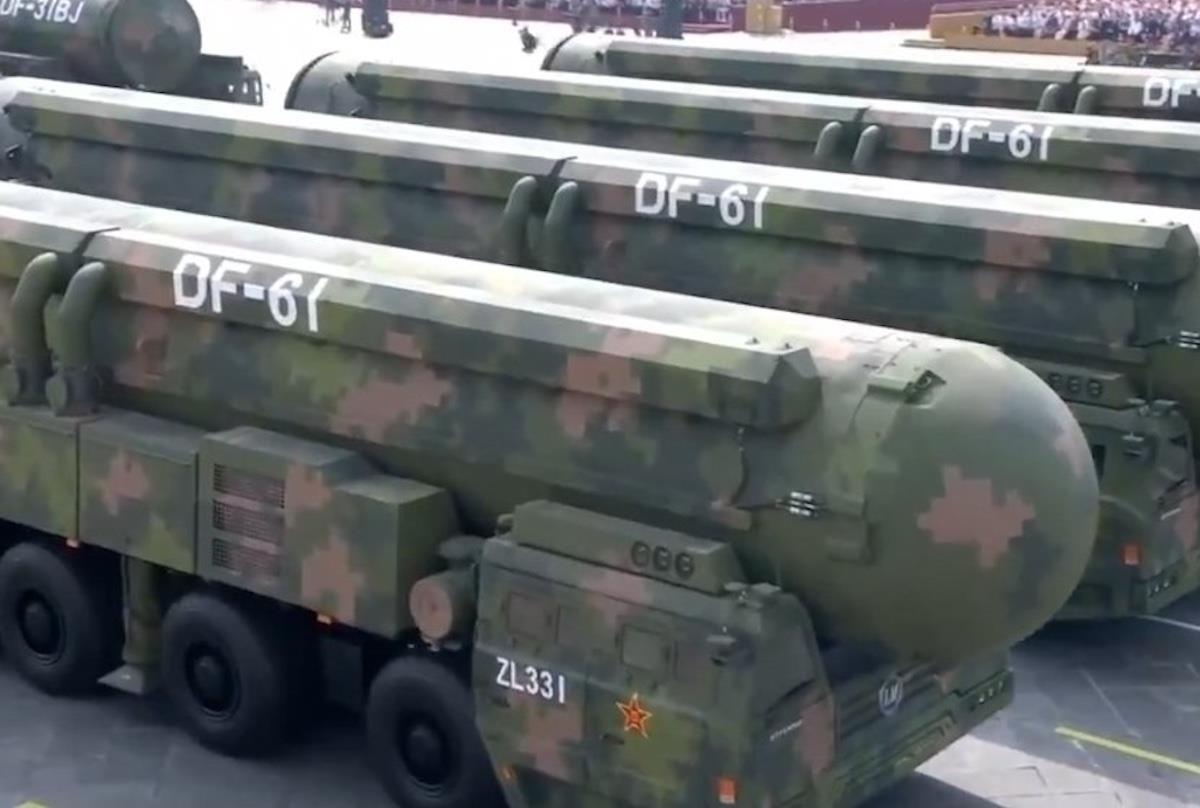China's DF-61 ICBM Points At US Nuke Silo Vulnerability
This month, multiple media outlets reported that China has rolled out what appears to be a new road-mobile intercontinental ballistic missile (ICBM), the DF-61, during a military parade in Beijing marking the 80th anniversary of its World War II victory.
President Xi Jinping oversaw the event attended by Russian President Vladimir Putin, North Korean leader Kim Jong Un and other foreign dignitaries.
Imagery showed 16-wheeled transporter-erector-launchers carrying canisters labeled DF-61, though whether they contained actual missiles is unknown, and details of the system's capabilities remain unclear.
Analysts note it resembles the DF-41, which has a range of 12,000–15,000 kilometers and can carry up to 10 multiple independently targetable reentry vehicles.
Since at least 2020, US intelligence assessments and Chinese sources have pointed to new ICBMs under designations such as DF-45 or DF-51, with speculative claims of ranges beyond 15,000 kilometers and payloads of up to 14 warheads. However, none of these figures has been confirmed.
The DF-61 is widely seen as part of China's ongoing nuclear buildup, which the US Department of Defense (DoD) estimates surpassed 600 operational warheads in mid-2024 and could exceed 1,000 by 2030.
Its parade debut came alongside the new DF-31BJ road-mobile ICBM and the JL-3 submarine-launched ballistic missile (SLBM), underscoring China's push to diversify its nuclear deterrent across land- and sea-based systems.
However, that number pales in comparison to the US's 3,700 warheads spread across its established nuclear triad, with China's still in its formative stages, limited by its current H-6 bombers' range and lack of stealth , as well as an incomplete bastion strategy for its nuclear ballistic missile submarines (SSBNs) .
But unlike the US, which has eschewed road-mobile ICBMs, China has placed a premium on these systems. According to Peter Wood and others in a March 2024 report for the China Aerospace Studies Institute (CASI), China's rationale for road-mobile ICBM launchers stems from their contribution to survivability and credible deterrence.

Legal Disclaimer:
MENAFN provides the
information “as is” without warranty of any kind. We do not accept
any responsibility or liability for the accuracy, content, images,
videos, licenses, completeness, legality, or reliability of the information
contained in this article. If you have any complaints or copyright
issues related to this article, kindly contact the provider above.
Most popular stories
Market Research

- Japan Green Hydrogen Market Size To Reach USD 734 Million By 2033 CAGR Of 27.00%
- United States Lubricants Market Growth Opportunities & Share Dynamics 20252033
- Japan Well Intervention Market Size To Reach USD 776.0 Million By 2033 CAGR Of 4.50%
- What Are The Latest Trends In The Europe Luxury Watch Market For 2025?
- Egg Powder Market Outlook 20252033: Growth In Functional Foods & High-Protein Trends
- Pluscapital Advisor Empowers Traders To Master Global Markets Around The Clock
























Comments
No comment